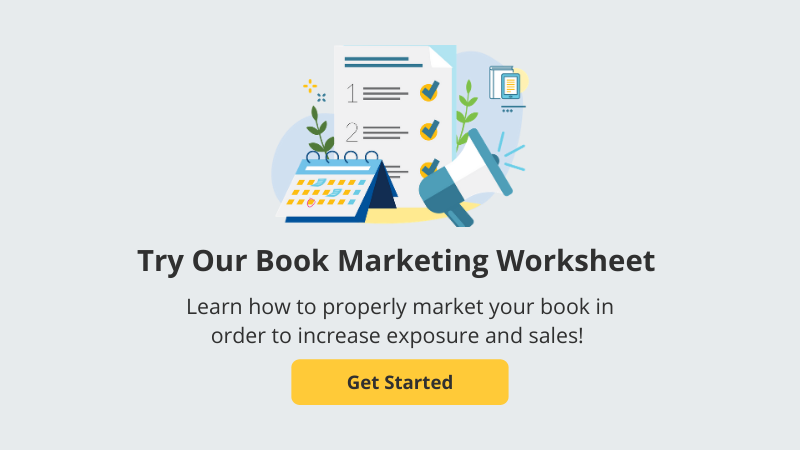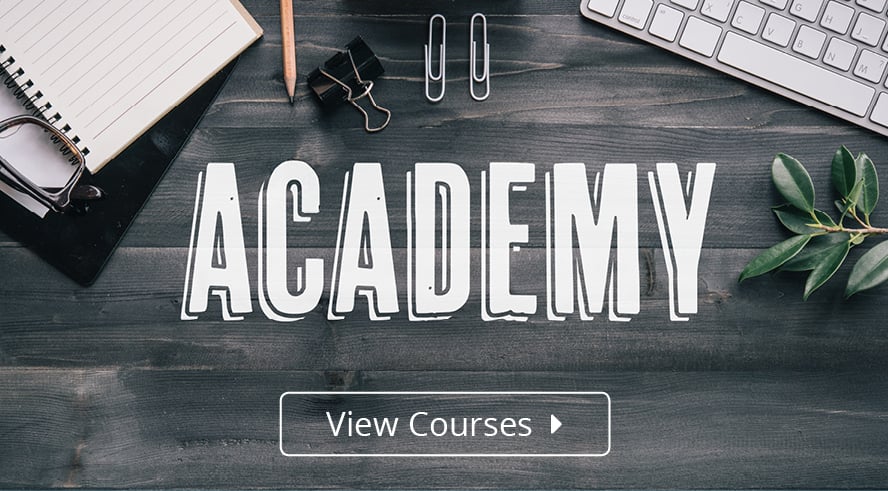You could sell more of your books if you'd answer two questions honestly. First, how often do people think about your book? Second, how often do people think about their own problems? You will probably agree that people think more about how they can solve their own problems, learn something, improve themselves, or be entertained than they do about your book. However, if you can show them how reading your book helps them achieve these things, you are likely to increase your book sales and revenue, so let's cover how to target your book's audience.
Define Your Target Reader
When I ask authors to describe their target audience, the most frequent response is “everybody who likes (their topic).” It is difficult, time consuming, and expensive to market to everybody. Defining your primary target readers and buyers is a basic, required task for selling books. But if you limit your marketing to those people, you are significantly limiting your sales and revenue.
Consider if you wrote a book about ways to resolve fear and your premise is that everyone is afraid of something, at some level. But how can you tell “everyone” the ways in which your book will help them? One way is to divide your target readers into categories. Using these techniques, you might address the people who are afraid of flying, dying, being in a relationship, or other types of fears individually—building a message specific to those audiences.
Think of Readers as Actual People
Remember that you are marketing to people, not to segments. So who is the typical person in each segment who will actually purchase your book? If you can describe those individuals and the problems that consume them, you can communicate the ways in which the content of your book can help them.
What if “soccer moms” were singled out as a target segment for your book about resolving fears? These mothers might be fearful for the safety, health, and future of their children. In this case, you would define the typical “mom” who will benefit by reading your book, in terms of age, education, life style, and geography. Defining the “typical mom” and creating a composite of the person to whom you will promote your book, you might seek answers to the following questions:
- What is her average level of education? This may dictate the vocabulary you choose to use.
- About how old is she? This will help you specify your target based on where women in this age group typically spend their time and what concerns affect them in particular.
- How much money does she make? This could influence your book distribution choices. Should you have your book available in Wal-Mart or Neiman Marcus?
- To what ethnic or religious groups does she belong? Could you sell your book to churches as a possible target?
- In what leisure activities does she participate or watch? Could a home goods or sporting retailer be a potential outlet?
- What magazines and newspapers does she read in print or online? Try to get a book review, or submit articles for publications in the media she would be looking at. It's important to pick the right media for your audience.
- In what current events or issues is she most interested? Use examples in your articles and releases to increase your relevance and potential search volume by utilizing specific keywords.
- Is there a particular life event she is facing (e.g., divorce, career balance, childbirth)?
- What makes her happy? Unhappy?
- What are her problems or ponderous issues?
- What organizations or associations does she join? If it has a bookstore on its website, have your book in it.
- To what radio and television shows does she listen/watch? Choose these to perform on the air.
- Are there geographic concentrations of prospects?
- How can you reach her?
Answering these questions can help narrow down your target book audience to more effectively reach your ideal reader.
Research Groups and Organizations That Communicate With Your Target Reader
Suppose you have a book to help divorced parents deal with their children’s trauma of being bounced back and forth between mother and father. Divorced parents would comprise the expected target segment, and most authors would stop there. However, the actual market is much larger—without being labeled as “everybody.”
Enlarge your sales opportunity by seeking buyers among people and groups that help divorced people cope with their split-up and its impact on their children. These could be divorce counselors, divorce attorneys, divorce mediators, marriage clinics and retreats, marriage counselors, American Counseling Association, Parents Without Partners, The Fathers' Rights Association of New York State, Inc., the store on the website for Focus on the Family, and ministries such as The Center for Divorce Education. You might also sell books where divorce rates are particularly high, such as on military bases. There is also niche media to consider, such Marriage Builders Radio. The lesson here is to look for sales in places you may never have considered before.
Find New Sales Opportunities
Below is an example of how I expanded the opportunity for my book, Job Search 101, which helped people use marketing techniques to find employment. Find new sales opportunities by asking yourself—and answering—these questions.
- Who could use the information in your books? The answer to this question defines the obvious segments for anyone seeking employment for the first time, anyone ready for a career change, or anyone looking for new employment after being laid off. Describe your primary buyers in terms of age, education, gender. Then think about what (the form in which your content is delivered), where (retail stores, online), and when they buy.
- Where do they look for that information? The initial answer would probably lead you to selling through bookstores, but unemployed people do not want to spend money if they can get the information for free. So, instead of waiting for job seekers to go to bookstores, I went to them by making personal presentations at colleges and high schools, and to groups of unemployed people at libraries, churches, state employment departments, employment agencies, outplacement firms, and networking groups. In many cases, I had meeting planners buy books for everyone in the audience in advance of my presentations.
- Who else could use the information in your books? Finding new segments in which to sell existing titles may be the most efficient way to increase your sales and revenue. I found more prospects in new niches comprised of high-school and college students, people who are over 50 years old, women, and blue-collar workers.
- Who could use your content in generally over-looked segments? Prisoners must be trained to find jobs before they are released. The same concept applies to military personnel before they are discharged. People in both segments need job-search information, perhaps explained in a different way. This opens the door to an opportunity for niche-specific content.
- Where do they look for that information? Prisoners go to their prison library or search online for career information. Military exchanges sell books for people in the armed services who are about to re-enter civilian life, and for their spouses who change jobs as they move with the transferred service person.
- Who could act as a decision influencer on people who could use your content? Instead of marketing directly to prospective customers, market to the people who can influence them. This could open the door to selling job-search content to career development officers at colleges, to guidance counselors in high schools, or to the parents of graduating seniors, which I did through direct-mail campaigns.
- Do people use the information in any unusual ways? One state government loved Job Search 101, but would not place an order. They conducted regular workshops, and perfect-bound workbooks do not lay flat. I had the binding replaced with a spiral binding, and the government office placed a standing order for 8,000 books a quarter. I volunteered to conduct the workshops for additional income, and I took that spiral-bound book to other states.
- What is the biggest hassle of purchasing your content? Some people do not want to be seen in a bookstore buying a job-search book. Heavy and oversized books do not sell well in airport stores because people do not want the aggravation of carrying them through the airport and on the planes. If your content can be delivered in a more portable form, it may be purchased in larger quantities. This might lead you to downloading your podcasts or publishing an audio version of your book.
- Who spends money to adapt your content to their specific needs? Informal research disclosed an absence of career information available for the Hispanic market. I found that Latinos were spending time and money translating into Spanish job-search information written in English. Hence, I had my content translated into Spanish as Elementos basicos para buscar trabajo.
- What knowledge about your content could lead to a new product form? In writing, I found it difficult to adequately portray the interview skills of body language, gestures, eye communication, and facial expression. That led to demonstrating those skills in a video.
- What information about your customers could lead to a new product form? Research among college students uncovered the need for job-search information in an easier-to-use, less expensive format. Using existing content, I created series of booklets, each devoted to one traditional job-search tactic such as writing a resume or interviewing. With a little re-writing, I easily adapted the booklets to meet the needs of other markets, including state unemployment offices.
- How could this information lead to a by-product that could be the key to entering another business? The titles Job Search 101 and Help Wanted: Inquire Within describe many of the basic techniques for finding employment. Together, they explain where to find the names of prospective employers, how to contact them, and how to interview effectively. Fortunately, these are the same steps required by authors to secure and conduct performances on television and radio shows. Even the interview skills of correct posture, eye communication, gesturing, and voice control are similar. This observation bore an entirely new product line, using as its foundation the fundamentals of job-search communication. I repurposed this versatile content and presented it to a new market as the video program, You’re on The Air. This media-training product helped authors get on and perform on television and radio shows. Its two companion guides, Perpetual Promotion and It’s Show Time, extended this product offering.
- Who uses your content in ways you never expected or intended? Who else could use media-training information in You’re on The Air? An association of civil engineers thought its members could enhance their practices if they could get on the air as local industry experts. I convinced other associations to do the same.
- How could the delivery of your content change if it were tailored for every customer? The fact that I was the author of a large product line positioned me as an expert in the field, enabling me to perform one-on-one consulting services. In this case my books served as an expensive brochure rather than as stand-alone products.
Knowing who buys, and why, will help you more effectively position your author brand in the minds of your customers and build your author platform. Be creative in your definitions of potential buyers. Finding new prospects for your books is the lifeline to more long-term book sales, revenue, and profits. Like electricity, it gives energy and power to the publisher, author, and title. It brings good books to life.













